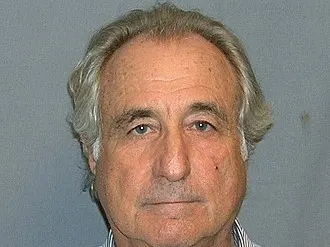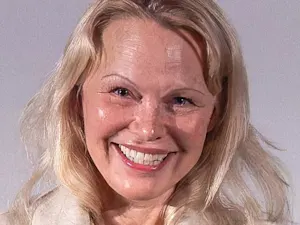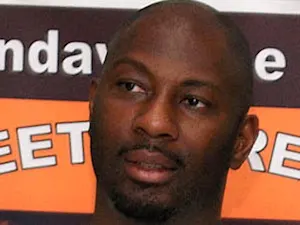
10 Facts About Bernie Madoff
Bernie Madoff's name is associated with scandal and fraud on a massive scale. And for good reason: he was the mastermind behind one of the largest and most deceptive financial frauds in history. Over several decades, he ran a multi-billion-dollar scheme that deceived tens of thousands of investors who had trusted him with their money. His elaborate con involved misleading people into believing they were earning high returns, while in reality, he was using new investors' money to pay off earlier ones, leading to massive financial losses.
While serving a 150-year sentence in federal prison for a long list of felonies, Madoff died in 2021. Madoff's case is widely known, but you might not know everything. Here are some lesser-known facts about one of the most prolific financial fraudsters in U.S. history.
 Bernard Madoff's mugshot, 2009. Photo courtesy of the U.S. Department of Justice. Public domain.
Bernard Madoff's mugshot, 2009. Photo courtesy of the U.S. Department of Justice. Public domain.
#1 His Mother's Imprecise Record-Keeping
Sylvia Madoff, also involved in trading stocks, came under scrutiny by the Securities and Exchange Commission (SEC) in 1963 for failing to maintain proper records. However, the investigation did not result in any significant action against her.

#2 He Worked as a Lifeguard
After graduating from Hofstra University in 1960, Madoff started his career by trading penny stocks using money he saved from his previous job as a lifeguard. Later that same year, he convinced his in-laws and a few other friends and family members to invest with him. With their support, he founded his own company, Bernard L. Madoff Investment Securities LLC.

#3 No One Is Sure When the Fraud Began
Madoff himself has given conflicting answers about when he started cheating his investors. In a 2013 interview, he claimed the scheme started in 1987, but he later said it actually began in 1992. Some reports suggest that Madoff's fraud might have started as early as the 1960s, when he first got involved in Wall Street.

#4 He Was a Pioneer in Electronic Trading
In the 1960s and 1970s, most stock trading happened directly on the exchange floors. At first, Madoff's firm used pink sheets for its over-the-counter trades. To compete with the bigger brokerages, Madoff and his brother, Peter, created a groundbreaking computer system that could handle electronic trading of stocks. This helped lay the groundwork for the National Association of Securities Dealers Automated Quotations, which became widely known by its acronym, Nasdaq.

#5 He Was Widely Respected in Finance
Madoff Investment Securities grew to become one of the biggest market makers in the financial world. At its peak, the company handled up to 9% of all trading on the New York Stock Exchange.
Madoff was also the chairman of Nasdaq in 1990, 1991, and 1993. He also served as the chair of the National Association of Securities Dealers (NASD), which ironically was in charge of regulating the securities industry.

#6 He Worked in the Lipstick Building
Alongside his brokerage firm, Madoff also operated an asset management division within Madoff Investment Securities. This part of his business was situated in Manhattan, specifically on the 17th floor of 885 Third Avenue. The building, often referred to as the Lipstick Building due to its modern, glass façade resembling a lipstick bullet, was a striking landmark in the city's skyline. Madoff's office in this iconic location played a crucial role in managing the large sums of money entrusted to him by investors.
 Lipstick Building, New York. Photo courtesy of Ajay Suresh under CC BY 2.0.
Lipstick Building, New York. Photo courtesy of Ajay Suresh under CC BY 2.0.
#7 He Managed Investments for Famous People
At the peak of his career, Madoff had almost 24,000 clients, including celebrities such as Steven Spielberg, Kevin Bacon, Kyra Sedgwick, and Larry King. He also handled investments for Elie Wiesel, the renowned Holocaust survivor and author, and Jeffrey Katzenberg, the CEO of Walt Disney Studios®. Madoff's wide-ranging clientele reflected his influence and the trust people placed in his financial expertise.

#8 He Was Almost Investigated Numerous Times
The SEC tried to investigate Madoff eight times during the 1990s and 2000s. However, these efforts were repeatedly hindered by poor management and conflicts of interest within the agency. One notable issue involved Eric Swanson, an SEC compliance officer, who fell in love with Madoff's niece Shana Madoff. After they married, one of Swanson's supervisors commented, "I guess we won't be investigating Madoff anytime soon," highlighting the complications that personal connections can introduce into regulatory work.

#9 He Stole Less Than You Think
Madoff's Ponzi scheme is commonly known as a $65 billion fraud. However, the actual amount he stole in principal funds was $20 billion. His firm issued account statements that falsely claimed investors had earned $65 billion in returns. In reality, these returns never existed. For those who had trusted Madoff with their savings, it seemed like they had lost $65 billion, even though two-thirds of that total was just a product of Madoff's deceitful imagination.

#10 His Victims Are Getting Their Money Back
The Securities Investor Protection Corporation created the Madoff Recovery Initiative, which is working to repay the people who fell victim to Madoff's schemes. As of July 2024, the SIPC had managed to recover $14.6 billion of the stolen funds. Out of this amount, $4.221 billion has been distributed to victims of Bernie Madoff's scheme.

Bernie Madoff's complex Ponzi scheme fooled thousands of people and caused massive financial losses. The case exposed serious weaknesses in financial oversight and highlighted the risks of unchecked greed and dishonesty. Even though efforts have been made to recover some of the lost money, the impact of Madoff's actions serves as a powerful reminder of the importance of honesty and careful regulation in the financial world.
References: Who Is Bernie Madoff? An Overview of the Infamous Investor's Life and Death | Five Things You Didn't Know About Bernie Madoff's Epic Scam























